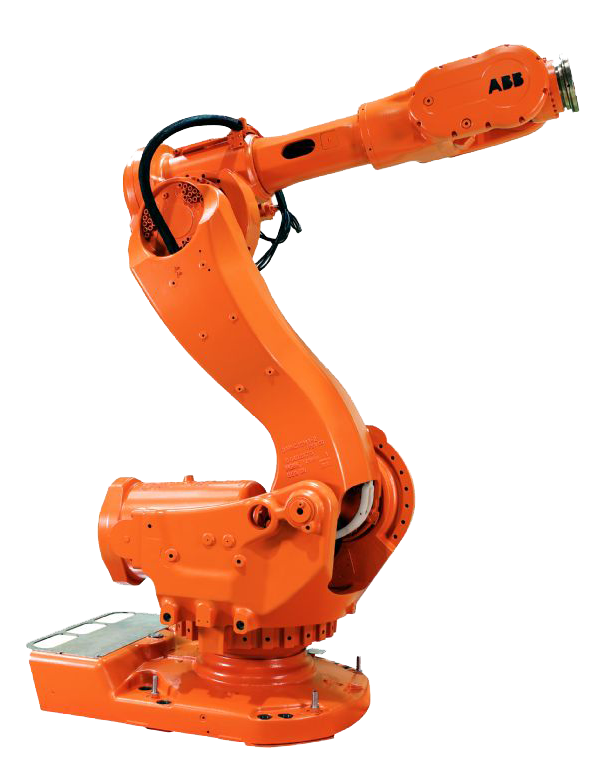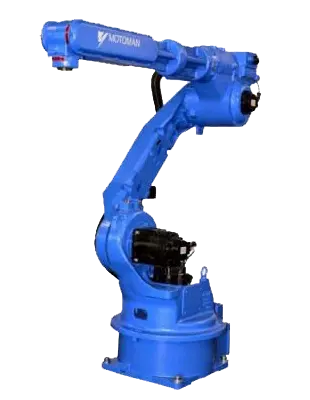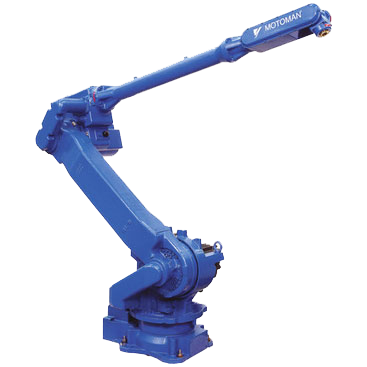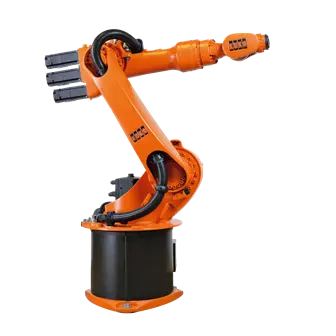Robots Done Right |
Used Robot Sales |
Milling Robots




 Robotic milling is a type of material removal application in which an industrial robot is integrated with a rotary cutter to shape a workpiece by removing chips of material. The milling cutter used during this process contains multiple cutting points that create small, separate cuts into the work piece. These small cuts result in chips being shaved off of the workpiece in order to be shaped.
Robotic milling is a type of material removal application in which an industrial robot is integrated with a rotary cutter to shape a workpiece by removing chips of material. The milling cutter used during this process contains multiple cutting points that create small, separate cuts into the work piece. These small cuts result in chips being shaved off of the workpiece in order to be shaped.
For several decades CNC machines were the traditional choice of manufacturers when it came to their milling needs. However, due to advancements in robotic technology over the past decade CNC machines are starting to become obsolete as manufacturers are turning to robots like the Yaskawa Motoman HP50 with Motoman NX100 controller to automate their milling processes. Milling robots are ideal for working with rapid prototypes, large workpieces, and complex materials. These are all areas where human workers and other milling machines fall short.
Milling robots take minimal setup and are easily programmed to automatically adjust for the cutter shape, diameter of the cutter, depth of cuts made, and the number of cuts. They can control the tool orientation and automatically adjust their wrist rotation to allow for greater reach, so no part is too big or too small to mill. The programmability of these robots allows them to work autonomously while producing greater precision and quality.
Not only do milling robots allow manufacturers more design freedom with their productions, but they also offer greater versatility. An ABB IRB 4600-45/2.05 milling robot can be setup to complete additional applications within a manufacturing process such as drilling and deburring. It would take multiple workers to complete these tasks, whereas one robot can complete several material removal processes seamlessly. Productivity is increased as a robot can quickly move from one task to the next with no stopping while costs are decreased with the elimination of multiple workers. CNC machines also fall short when it comes to versatility as they are only designed to be programmed for one specific application.
Manufacturers are realizing the benefits of automating their milling applications with robotics as opposed to CNC machines or using manual labor. The capability of articulated robots to shape complex parts at incredible speeds while also having the flexibility to complete additional processes on the production line allows manufacturers to see their ROI faster than with traditional milling equipment.
Contact us by email mm@robotsdoneright.com or phone (440) 724-6568 today to discuss buying or selling a milling robot.